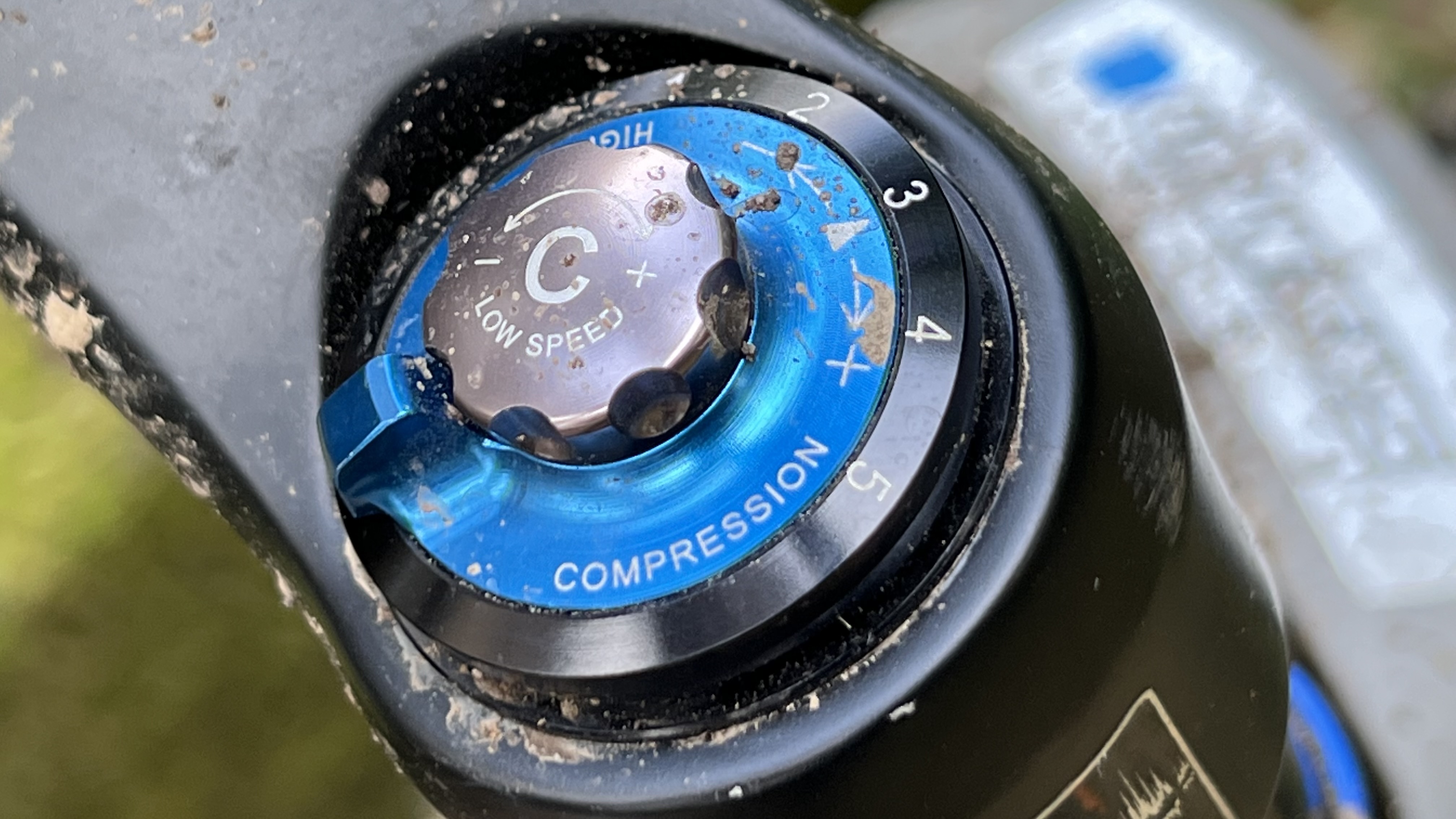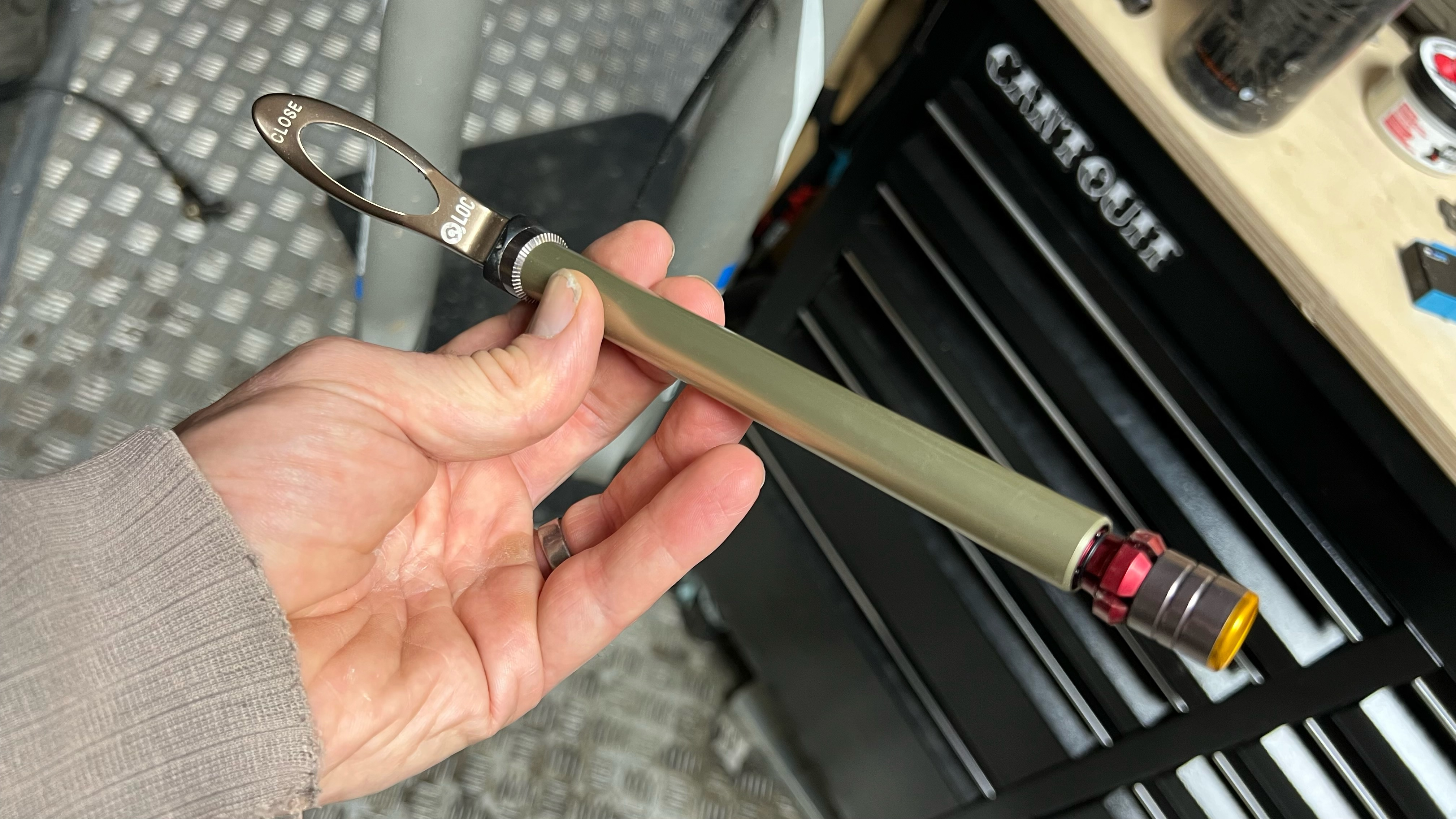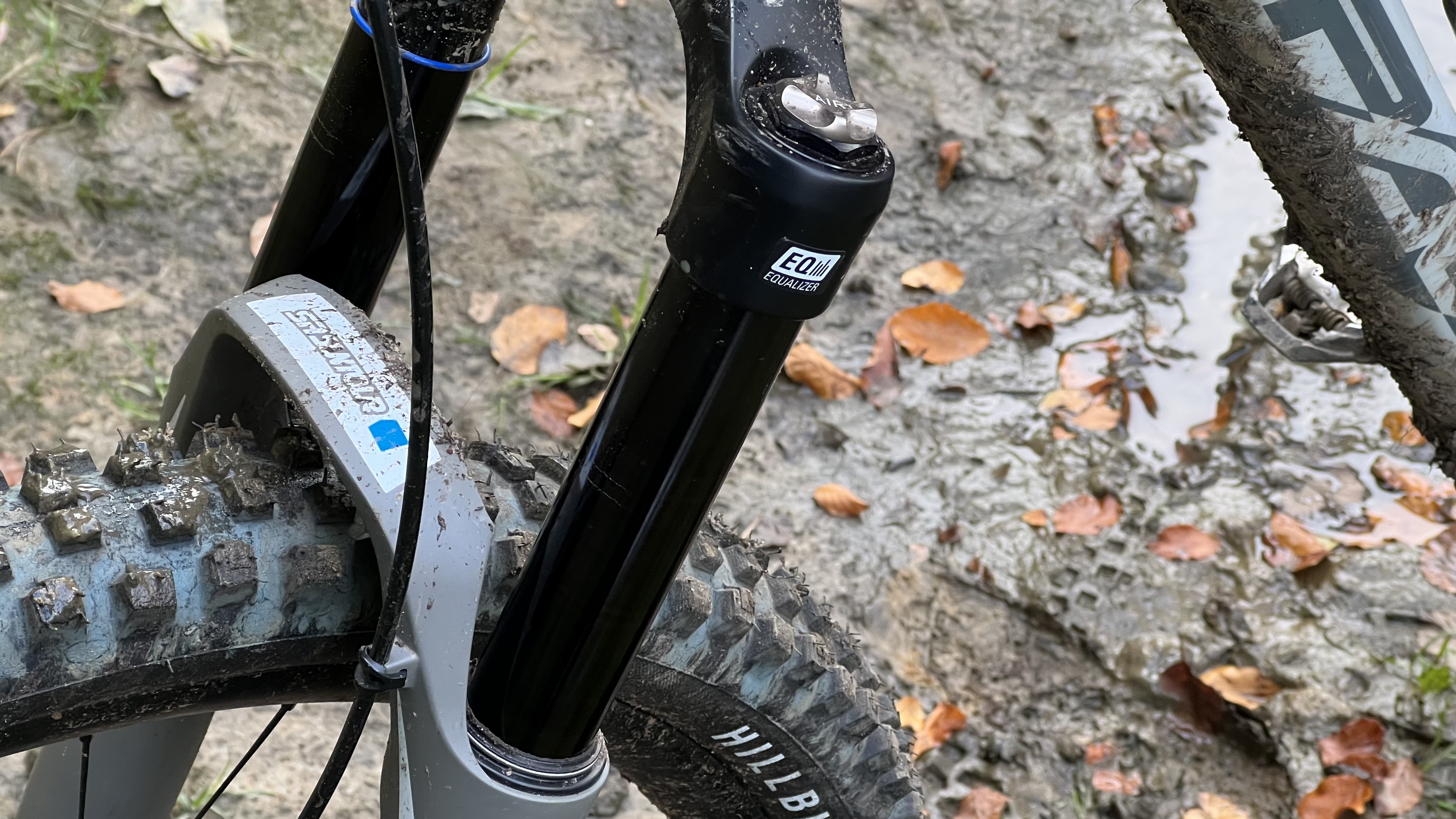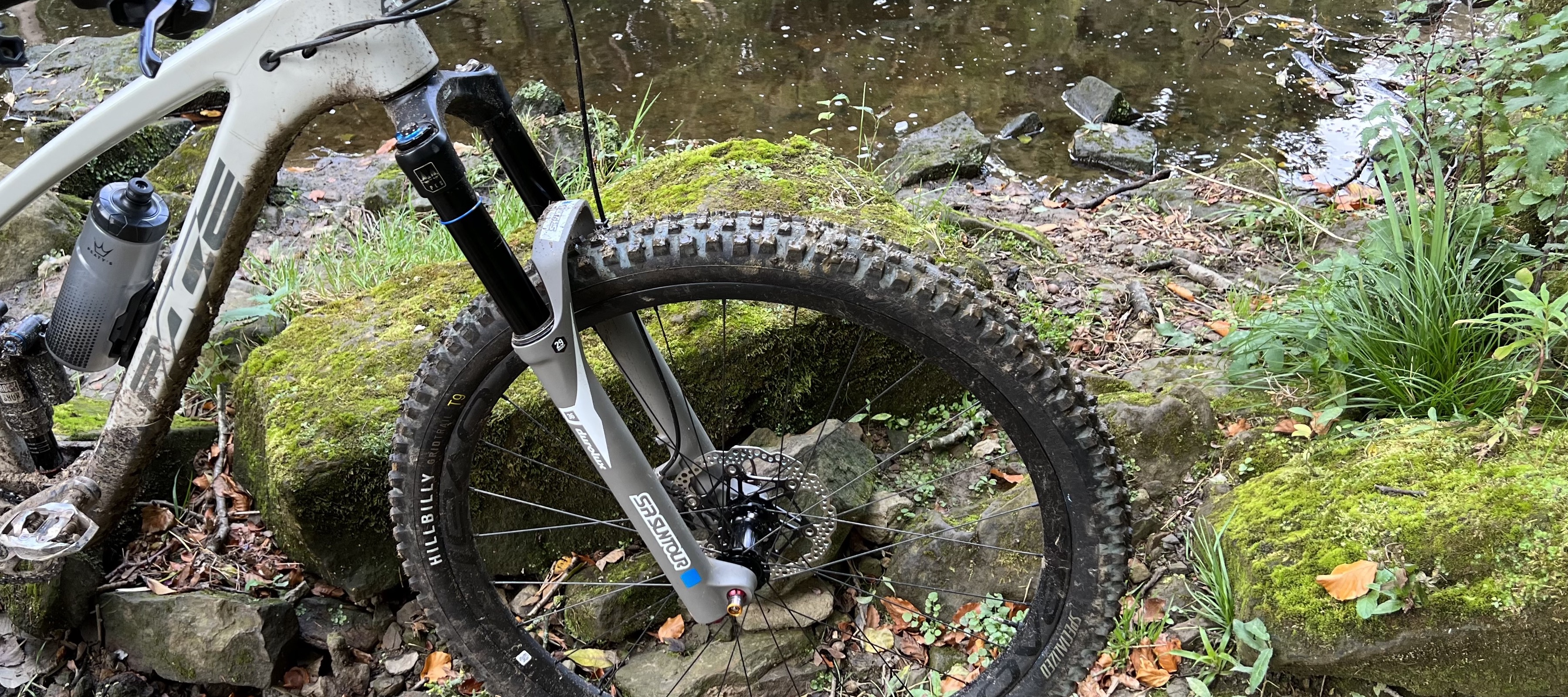Bike Perfect Verdict
Super solid, yet smooth stroking fork with wide range damping adjustment and other features at a great price. Relatively weighty with an irritating axle design though and support and sensitivity are hard to balance.
Pros
- +
Solid, flex free feel.
- +
Sorted overall damping
- +
Potentially sensitive
- +
Wide range of compression and rebound adjustment
- +
Good price
Cons
- -
Irritating axle design
- -
Awkward to balance stroke
- -
Weighty
Why trust BikePerfect
If you want a lot of adjustment at an affordable price the SR Suntour Durolux 36 R2C2 Boost EQ is one of the best budget mountain bike forks around. It delivers a lot of the best suspension fork features you’d normally pay a lot more for. Basic suspension performance is good too, but you’ll need to use that adjustability carefully to get a balanced stroke. It’s heavy and the unique axle is a pain to use in real world conditions.

Design and build
There are 38 and 36mm legged Durolux forks and I tested the slimmer, slightly lighter 36. My sample was set to 140mm travel but you can get it in 150-170mm and 29er or 27.5in flavors. The RC2 is the second tier fork (under the R2C2) but you still get a hollow crown that allegedly saves 35g. It’s still heavy at over 2.2kg cut to fit though. A small port with a screw-in plug sits just below the seal head on each leg allowing you to let out built up pressure caused by extra long descents or changing temperatures. It can be used to top up lube between services.
The unique Q-Loc2 axle is ambidextrous and you get an optional bolt on plastic fender which extends in front of and behind the fork so it looks like it will provide meaningful spray protection. Unfortunately ‘my’ fender had been lost by a previous tester so I can’t confirm.
There’s a lot going on inside this flagship fork too. EQ means it has automatic pressure equalization between the main positive spring and the small negative spring that helps get the fork moving. PCS is a sealed cartridge, shim-based damper system with a spring backed IFP (internal floating piston) to keep performance consistent as the fork compresses and rebounds. All adjusters are metal with obvious labelling and a clearly communicated click between each set point. The RC2 only gets high and low speed adjustment on the compression, not both compression and adjustment like the R2C2.
SR Suntour’s QSP (Quick Service Product) policy of creating really user-friendly designs means the fork can be bled and serviced without special tools.

Ride and performance
Unlike RockShox and Fox, there’s no spring pressure or damper settings guide on the fork itself but there is a pressure/sag guide in the handbook. We’d suggest setting it at least 10 percent higher than suggested if you’re remotely aggressive. You’ll also need to cycle the fork to at least 50 percent stroke several times to equalize the air springs.
While it’s a bit stiff at first, once you’ve broken it in the fork moves easily through it’s travel with no spiking or stutter issues even under braking or slapping into square edges. Once you’ve got the pressures roughly right the PCS damper feels really composed on bigger hits and drops too. I did find myself niggling the rebound dial regularly trying to find a balance though as it seems quite speed/sensitive. Specifically a setting that felt slow in the car park would often feel fast on the trail and I never achieved the consistent ‘flutter’ connection and micro grip feel of the best Fox and RockShox forks.
The linear stroke – even with a full set of plastic volume spacers and three out of four rubber volume spacers installed – meant I had spend a lot of time trying to find a sweet spot between a sensitive upper stroke and too much dive/not much mid stroke support. The support gets better when you add 10 percent to the recommended pressures and run three clicks of high-speed, but it then feels slightly numb even with low-speed compression fully open. As it comes supplied (in shorter travel settings at least) with most of the potential volume spacers fitted too, there’s not much scope to add progression that way.
While it’s undoubtedly ingenious, even after over a decade of using Suntour’s expanding collar QLOC axle design, I still have more misses than hits when trying to get a fast, simple extraction/insertion compared to a conventional screw in axle. How much that matters to you obviously depends on how often you remove your wheel for transport/storage etc. Oh and the fact it’s ambidextrous may sound like a good idea until you potentially burn your knuckles on a hot rotor by running the lever on the disc side. Having no threads means there’s no option for a simple bolt through-axle either.

Verdict
If you’re patient with the tuning the Durolux packs a decent, smooth and well damped performance for a good price. Especially if your riding tends to be towards the thuggish end of the spectrum where you’ll also worry about the weight penalty less. It never feels quite as next level sorted as the best current forks or even 2021 forks that you’ll find being sold cheaper now. And if you don’t like dials or need long travel, the cheaper, blissfully fit and forget Marzocchi Z2 would be our bargain choice.
Tech specs: SR Suntour Durolux 36 RC2 Boost EQ fork
- Price: $650 / £649
- Sizes: 140-170mm, 27.5 and 29in
- Weight: 2210g, 220mm steerer with nut

Guy Kesteven has been working on Bike Perfect since its launch in 2019. He started writing and testing for bike mags in 1996. Since then he’s written several million words about several thousand test bikes and a ridiculous amount of riding gear. He’s also penned a handful of bike-related books and he reviews MTBs over on YouTube.
Current rides: Cervelo ZFS-5, Specialized Chisel, custom Nicolai enduro tandem, Landescape/Swallow custom gravel tandem
Height: 180cm
Weight: 69kg

